Scaling up With BI: Business Strategies for Roofing Companies - PODCAST TRANSCRIPTION
September 6, 2023 at 11:23 a.m.Editor's note: The following is the transcript of a live interview with Eugene Zukowski from Jobba Trade Technologies, John Kenney from Cotney Consulting Group and Trent Cotney from Adams and Reese. You can read the interview below, listen to the podcast or watch the webinar.
Heidi J. Ellsworth: Welcome to this month's RLW, Read, Listen, Watch from RoofersCoffee Shop. My name is Heidi Ellsworth and I'm so happy to have all of you here for this very informational webinar today. We are very excited to be welcoming experts in the field to talk to us about Scaling Up With BI: Business Intelligence Strategies for Roofing Companies. I'm so glad you're here. First of all, I would like to introduce Eugene Zukowski with Jabba to the show, a regular on the show.
Eugene, welcome.
Eugene Zukowski: Thank you guys so much for having me again today. Really love doing these and so happy to be here. Really excited.
Heidi J. Ellsworth: Great. So awesome to have you. Can you introduce yourself a little bit, please?
Eugene Zukowski: Yeah. I'm so sorry. I'm so used to doing this, I figured everyone already knew. No, I'm kidding.
Heidi J. Ellsworth: I know. That's kind of it.
Eugene Zukowski: Yep. Eugene Zukowski with Jobba Trade Technologies. I am the Senior Product Specialist here. So my role with Jabba is to really help customers and prospects understand how the platform can help them run their business. If they have specific issues or problems they're trying to solve, I'm really the person that shows them how this platform helps them solve their unique problems.
Heidi J. Ellsworth: Perfect. That is great. Thank you so much as always, for your wisdom and for being here.
Next, I would love to introduce John Kenney, a regular that everyone knows.
John, welcome to the show and please introduce yourself.
John Kenney: Yeah, always happy to be here and I especially love working with this group right here, and we do different ones. It's always a lot of knowledge and fun to learn.
So yeah, a little bit about myself. Right now, I'm currently CEO running Cotney Consulting Group. What I do is I work with the roofing industry and the contractors and basically working everything from operations to training to business, operational, financials, whatever it may be for learning. And I bring that from my 45 years of experience in the contracting business, working as a roofing contractor, and I still hold a roofing contractor's license in the great state of Florida that I hail from today.
So always enjoy being here and always enjoy trying to share the experience and get feedback from the audience. That's always the best part, hearing what they have to say.
Heidi J. Ellsworth: Thank you. And John, I'm so glad you're here. I know you are out of Tampa, and also Trent, who we're going to introduce in just one second, but I'm really glad you're safe and sound and are able to do this webinar today, so thank you.
John Kenney: We are too.
Heidi J. Ellsworth: Yeah, exactly.
And Trent, who has been on the show so many times, just love having you. Trent, please introduce yourself and ... Yeah, please introduce yourself.
Trent Cotney: Sure. I'm Trent Cotney. I'm a partner and construction team leader at Adams & Reese. They're a large national law firm. I serve as General Counsel for a variety of roofing associations, including NRCA Western States, FRSA Chicago and so on. And love the industry. I mean, I've been representing contractors and roofing professionals for 25 years, and it's my passion. It's the reason I'm still a lawyer. So happy to be here. I'm looking forward to today's conversation.
Heidi J. Ellsworth: I love it, and I'm so glad you're safe also with your home in Tampa.
Trent Cotney: All good.
Heidi J. Ellsworth: Thank goodness. And Trent, just as always, everything you do for the industry and always coming on to our RWS, our Coffee Conversations and really sharing your wisdom, I just want to say thank you upfront before we get into all this.
Trent Cotney: My pleasure.
Heidi J. Ellsworth: Thank you. Okay. As I said, everyone, this is being recorded, but we want to take questions. We want to, in the chat, and I already saw Gemma come in. Welcome. So please, let us know who you are, where you're coming from, what type of business you have, and feel free to ask questions throughout the entire presentation or make comments or chat back and forth. This is an open forum and it makes it a lot of fun. So let's get started learning about business intelligence.
So starting out, Eugene, I know, but this is a question that I'm not sure. It's kind of one of those phrases that everybody thinks everybody knows what it is, but we're really not that sure. So what is business intelligence?
Eugene Zukowski: Well, to really simplify business intelligence, because again, I think it's becoming one of those words like APIs and googling things where people just assume or use it for everything that's possible. But really business intelligence is understanding the data in your business so you have an insight into what your company is actually doing. What is happening in my organization? What's my data telling me? And it's the ability to look at that information and make good executive decisions.
Heidi J. Ellsworth: That's the thing. A lot of us, we just have been around for a long time. We have that gut feeling or we think we know. But really when you have that data, that is what all of a sudden brings it together. And sometimes you're totally wrong with what your gut said because you weren't seeing the data.
John, you've been doing this for a long time. You've seen this evolve, business intelligence going from notebooks in ... sorry, I'm probably dating both of us, but notes in a book to Excel charts to what we have today. So talk a little bit about what you see is business intelligence and how to understand that, how important it is to understand the data.
John Kenney: Sure. So one thing on the data, we live today in an era of what I want to call smorgasborg of data overload. Okay? You easily can get data on anything you want in your business, but the important part about it is what really makes it to become business intelligence or how it works best for your company is that you understand which data you want to analyze that's going to give you the most return on value to run your business.
There's a ton of data that you can track that is really just for the sake of tracking data, right? It's kind of like an app on your phone that tracks everything you do in a day or all your body functions, blood pressure, all the different things you can get too much. So what you want to do is take and understand what numbers really mean to your particular business. So I'll just take this one step further. We're going to get in deep, but just because business A tracks one way doesn't mean that's right for business B. Okay? So that's where this kind of all comes together to understand what works for your business itself.
Heidi J. Ellsworth: That's so true.
Eugene Zukowski: John, I kind of ... Sorry, I'll take it, but John-
Heidi J. Ellsworth: Oh, go ahead-
Eugene Zukowski: ... I kind of look at it like paralysis by analysis, because you're looking at so much information, you don't know what to do with the information that you have. And that's not really business intelligence just dumping your data on you. It's how do you use that data to make good decisions? And if you have too much data, that's as bad as no data.
John Kenney: Exactly.
Heidi J. Ellsworth: And Trent, you and I have worked together a lot over the years, and you track data like nobody's business, and no pun intended, but what would be your explanation of business intelligence and how important it is in a roofing company?
Trent Cotney: Yeah. So I'm going to approach it a little bit differently, and obviously I'm a pessimistic conservative lawyer that has to be really careful about business interest. So everything I do is always from that conservative perspective of making sure that there's risk mitigation. And I kind of view business intelligence as an opportunity to, for lack of a better word, weaponize data. You get the opportunity to see where you are weak and fix it. And if you are paying attention to the data, you can correct problems.
My goal has always been to be proactive rather than reactive. And I think if you get the right kind of data, if you are efficient in culling through it and being able to determine what's important you can portend the future, you can basically prevent a lot of the big legal issues, safety issues, employee issues from happening because you learned from the past. The data reflects that.
Heidi J. Ellsworth: Yeah. Yeah. That's exactly what we do in our business too. We're constantly having our benchmarks and making sure we're staying on target to try and we start seeing things not go the right direction, we make a change.
Okay, let's take that and those really what business intelligence is and let's apply it to core functions. So Eugene, let's start with you on customer service. And really how do you use business intelligence in customer service?
Eugene Zukowski: To really use business intelligence in customer service first, like we said, you have to look at the right information. What is customer service? What is the key KPI? Let's say our customer service is our company's goal is to have all customers responded to within two hours, at least that initial phone call. So that's a very key KPI, and that's one that's going to kind of help you set your benchmark, and it's something to go against.
So having the ability to understand what metrics or what things are important to your organization and to your customers is how that data can help you. Are you hitting your goals? Are you trying to? But I think the key to it is understanding what those KPIs are and focusing in on them and then being able to capture that information is key.
Heidi J. Ellsworth: Don't you feel sometimes that the data really will also, you may start with certain KPIs, you may start with certain goals, but then as you see the data, it may also shift you a little bit? Maybe because maybe it's not two hours, maybe it's one hour that really needs to happen. I mean, how have you seen that?
Eugene Zukowski: Yeah, that's exactly it. I mean, everybody has to have a benchmark. I think a lot of times people are afraid to start with the wrong benchmark, and I don't think that's something to be afraid of. They don't know exactly what the bar should be set at. Set the bar somewhere reasonable. You guys know your business, you know what should be reasonable, and then pivot or adjust from there.
But understanding that is kind of, it's okay to start the focus on those key KPIs that make sense and then pivot with what the data's telling you. If you're noticing that your data's telling you, for example, the customers that you call back in 30 minutes, they pay their bill faster because you know what? And then you start seeing the trend. Pivot to the trend that's going to help you with your business.
Heidi J. Ellsworth: I like the paying faster. That's good.
Eugene Zukowski: Well, you never know.
Heidi J. Ellsworth: Yeah, you never know. That's what data can do for you.
John, taking that same idea, how do you put this towards estimating and service?
John Kenney: Sure. And I know we're going to do a deeper dive on these coming up here, but realistically, what you need to do is I can tell you right now estimating, you can't just look at it as estimating. Estimating we're going to talk deeper into the KPIs on that later. But if estimating's not right, everything else, you don't stand a chance in your company to bring a job in and operations if you're estimating's not being tracked correctly. And also your cashflow is not going to matter because you can't have a positive cashflow if you don't have a good profit margin to stay out with. And you can track your individual estimators and not only by what they're closing on jobs, but the type of jobs. And then you should be interconnecting these KPIs with how well you're producing in operations, how well you're collecting on these type of jobs. So that's why I say it's more than one thing. We'll go a little bit deeper.
And then in service. I think service is really tracked so poorly in our industry. And I'm not talking about software wise, I'm talking about what people look at. Service, one of the greatest things to look at in service, just to give you a little tidbit, is what are you producing per ticket, per person in each one of your trucks on what type of work? How much T&M work are you doing in comparison to upselling when you're doing T&M? Because what you're looking for in service, service is the profit opportunity center of your entire company. I don't care whether you're doing new construction or re-roof, you will never make the amount of profit in any other division that you have the potential of making in service.
But you don't want to just track your gross profit or your net profit. You want to track what's behind that so that you know how to increase it. So that's really why you want to track these the way you do.
Heidi J. Ellsworth: That's great. I love it.
And Trent, safety regulations, legal issues, a high level of how to use BI in these?
Trent Cotney: Sure. We'll start with safety. Safety is a key thing. And Heidi, I say it in every single presentation I ever do. In construction, the party with the best paper wins the day. And obviously we're in an electronic world, we should make that into a drinking game as much as I say it.
But business intelligence, being able to properly document safety efforts is as critical as doing the safety efforts. It's great that you have toolbox talks. It's great that you do safety audits, but if you don't have anything to properly document that, it's going to be very difficult to defend your position in front of OSHA or in front of bad guy lawyers that might come after you for one reason or another.
Big believer in being able to do that. And then also looking historically at what types of jobs potentially cause safety problems. I've seen over this just year, a huge number of incidents involving skylights. That is a problematic area that should clue in if you have a past history of injuries or any issues with that, that should pull you in that you should double down on certain safety instructions and courses related to that, both prior and during those types of jobs.
Regulations. Business intelligence is incredibly important in not only keeping up with the current regulations, but in being able to provide the information and data that's needed to understand them. Everything that happens in roofing is highly regulated. I'm looking at our audience here. Some of you live in states that I guarantee you while we're on this webinar right now, that they've enacted another law that affects roofers. So you really need to be able to keep up with that information. And if a government agency comes knocking on your door, you have to be able to put your hands on that data as quickly as possible.
Great example is maintenance of I-9s for immigration purposes, OSHA logs, all those types of things that if somebody comes knocking, you better have it and have the historical data on it. But you can also learn from that.
One of the things I like to do is if you want to get really granular, you look at your moderate for workers' comp, but then you also compare that to your OSHA citations and your OSHA logs and you determine what projects have the highest percentage chance of employees getting injuries on that job. And you should factor that in to future bids and future work that you're taking because it's a higher risk job from an employee standpoint. You need to take that kind of stuff into account.
And then last, legal issues. Heidi, unfortunately with roofing, you're always going to have a customer that you can't make happy. It's just going to happen. It could be one out of every 20, one out of every 500, one out of every thousand. It's just going to happen. There are a lot of crazy people out there, Heidi. Trust me. I talk to them daily.
So one of the things that I like to do is make sure that you have a system in place where you're using communication, written communication to tell a story. What we do in construction law, I'd love to say it that it's a lot of theatrics. It's not. It's really telling the story through documentation. So if there's a ton of documents indicating that a customer's prevented access and you can't get access to the job site or the HVAC contractor is causing delays or whatever it is, that's going to speak well when you're in front of a judge, jury, or arbitrator.
Business intelligence and all the data that comes with that makes my life easier, and it should make your life easier as well just because it gives you those bullets that you need in the event that you've got a problem either with government issues or with customers.
Heidi J. Ellsworth: Yeah, document, document, document. Whenever I see you Trent, that's what I think, document, document, yeah.
Trent Cotney: Good.
Heidi J. Ellsworth: Okay. I love this. Let's dive in a little bit deeper and really look at each of these segments that we talked about and really what business intelligence is doing in those areas.
Eugene, I'd love to start with you with customer service and kind of work through all these areas that BI is really affecting.
Eugene Zukowski: I mean, this is a really, really good list of KPIs, for example. And maybe first time looking at this you wouldn't think these are KPIs, but they really are. I mean these are good data points. Like business intelligence, it's going to give me that information, do notifications make a difference between my customers? Does notifying them in real-time versus not notifying them, does that make for a happier customer, repeat customer? Again, this is a very good and powerful KPI that a company might want to integrate, the difference between customers that get real-time notifications versus not.
It leads also to effective communication. You know by looking at the information that you're tracking if what you're sending your customers is hitting the mark. Are they opening their emails when you email them an invoice? Are they ... It's just things like that that you need to really start looking at this in ways to help your business. Obviously, let's take that invoice example a little bit further. If they're opening the email and they're paying you faster, it's probably a lot better to push your customers to that type of invoicing as opposed to paper for example, or offering them a pay portal or something like that. Again, it's just about what your gut feeling tells you versus what's actually happening in your company.
Now, a couple of really good other ones, average response rate. What are we servicing our customers? Compare that to what we're telling our customers. Maybe like we talked about it earlier, let's say our average response, we wanted it to be two hours, but we noticed we're hitting an hour. Take advantage of that data point and change your messaging we respond in an hour because you're actually admitting it or exceeding it.
And again, this is just good information when you're trying to track customer service and KPIs. All that other information. Are we doing the best thing for our customers? Are we offering every customer preventative maintenance? Tracking that information, because again, preventative maintenance, it's not only good for the company, it's great for the customer to help them extend the life of the roof, obviously, but it's also a really good strategic business plan to help the customer, I mean the contractor stay busy. So again, tracking that type of information I think are very key to customer service and also to the health of the company.
Heidi J. Ellsworth: Yeah. And it's interesting, because I think about aged receivables, right? And Trent, I've talked to Trent about this before. Some of these things on here can be an indicator of the economy also, if you're getting ... And maybe Trent, you could just address that real quick because I know that that's always something you had said and you say to a lot of people is watch your receivables.
Trent Cotney: Right. I mean the great thing about business intelligence is that it increases efficiency. And increased efficiency decreases risk most of the time. I would say that if you have a good process in place with AR, if you're on top of things, the quicker that you're on top of it, the quicker you're able to start going after that money, the better. The longer that goes out, the more difficult it is to collect and the more that you're going to have to spend to collect it. Nobody likes lawyers, so you're going to have to hire and pay a lawyer, and that's going to reduce the amount that you're going to get back or a collection agency or whatever it might be. So I think business intelligence really helps speed that process up. Efficiency is key when it comes to AR and collections.
Heidi J. Ellsworth: Yeah. And when you think about the competitive advantage and the trust that builds, both inside with your inside culture and with your customers, I think it's really key.
Eugene, going through customer service, it makes sense.
Eugene Zukowski: Yeah, yeah, and it's a huge competitive advantage, especially today. I mean, even people that still like things the old way, they're always tending to leaning to who's it easier to do business with. So if a lot of my stuff is convenient to my customer, you may not be the cheapest, you may not be the fastest even, but if it's easy to do business with you and it really is a competitive advantage altogether the easier you can make it for your customer to do business with you.
Heidi J. Ellsworth: Always. Make it easy. That's my life goal. Make everything easy.
John, estimating. Let's dive a little bit deeper into this. How can business intelligence help with estimating?
John Kenney: Sure. One thing I know we're deep and diving is, if I want to start out with a little bit, a lead into some of these things and estimating, one thing about business intelligence, we're talking about when we go through these really you got some KPIs. I know that came up earlier, Eugene talked about that.
One thing you got to understand is don't worry about what you think your KPI should begin with when you're starting this, especially if you're starting to track your estimating department seriously for the first time. Whatever you're tracking, and that is, let's just say your average, that's where you stand, that is your KPI that you're going to start with. You can improve off of that so you at least have a starting point.
So what I mean by that example. Estimating is absolutely the foundation for the success of your company. And if you've been at any of my seminars or any of the trainings I do in estimating, the reason for that is if you don't have a proper estimate, know where your costs are and what you're going after, no one else that follows that point in your company stands a chance of success. So you're either making it or sinking it right off the bat before the price even goes out the door.
So whatever it is, whether it's close ratio or whatever the part you're going to track, whatever your existing close ratio is, that's what it is. Whether it's good in the industry or bad in the industry, it really doesn't matter. That's where you're starting from. So that's what you want to track.
Now the other important thing to keep in mind with business intelligence is you're going to have numbers, you're going to have data, you're going to have KPIs that are going to help you make decisions. But if you're unwilling to make these decisions based upon what is telling you, then you're running blind anyways. It's a real waste of time.
So I just wanted to kind of get that out of there because having a dashboard with beautiful KPIs of how to run your business, it's just like a gas gauge. If it's on empty and you refuse to stop for gas, what's going to happen at the end? You're probably going to run out. Same thing in your business, you're going to run out of gas.
So let's talk a little bit about estimating. One thing I want to talk about kind of combining all these, and we'll talk a little bit about pricing in that as we go, is not only do you want to track your close ratio, what an estimator closes at. You want to be able, what are they closing at? What type of job is it? And more importantly, how does it finish? Okay? Because it really doesn't matter how much you're selling. It's how it's end performances.
But here's a key that a lot of companies don't track. Track your estimator to the job completed and also the foreman or crew leader that ran that job and the type of job it was. So now you have the data not only of how your estimator does closing this type of work. How does it finish? Which crew maybe do they work better with? Because sometimes that happens. And this way now you're starting to get some real pinpoint information for business intelligence where before you even bid a job, you're going to know which estimator to assign it to because they're best equipped to handle it. And then when you do get the job, which crew do you assign it to based on that type of estimate for the system or so forth, right?
Example, if you have an estimator that's really good at bringing in modified work and it's constantly going to a crew that's better at single-ply TPO work, you've got an unsuccessful end project which not only makes the estimator look bad, it's going to fail in your company. So I just wanted to touch on that to let you know it's more than just close ratios that you want to look at.
Pricing and inventory. Business intelligence inventory, a lot of roofing companies, especially coming out of the pandemic, really started stocking more and more material, which is great to a point. But you got to be able to rotate it. You got to be able to use it. If your estimating department has no idea what you have in inventory of maybe that could bid a job based upon your stocked material, that's a business intelligent decision that you want to make. So you want to make sure that's available.
And pricing, I want to talk about pricing strategy as business intelligence. It's not about saying, let's just hit 30% GP on this type, 35 on that. What is your pricing strategy? Well, what do you need to know? You need to know your exact overhead and break even point in your company so you can get to breakeven, right? That's a pure good estimate. Your costs are all covered. Then it's not so much what your GP is. What is your bottom line net profit that that company needs to make for profit goals? So you make sure your estimating is in line with your financial business decisions.
Those things are very, very important, which is why we have estimated margin versus actual. That comes from tracking a completed job back to it is. I've seen many jobs in my career that were bid at 30%, 35%, let's use as an example, bidding margin, your profit margin, and it ends up at 20, 15. Some of them end up at 40. They do better. But you got to ask yourself, this goes back to what Trent said of how you use this. Ask yourself why. Why did these jobs not perform? Why did they perform better? That's business intelligence to move forward. And then you're going to end up with my favorite line estimating to win strategy. That is your strategy in the estimating department.
Heidi J. Ellsworth: That makes all so much sense to me. I love the part about the inventory too. If you don't know what's in inventory, and that's stuff that should be on your dashboard that everybody should be able to get to. And it kind of goes the same thing with safety, John. I mean, how important is it to really understand your numbers when it comes to your safety records? So please continue.
John Kenney: Yeah, I mean, confirm your safety, your pre-check is completed. And again, that has to happen. That should be part of your routine so that you know right away there is no safety issue starting out that job. So that takes that out of your equation when you got to go back and figure out what may have went wrong.
And then when you're looking at your accidents versus compliance, that's going to give you a lot of telltale reasons. Why are we having accidents, right? Because really what compliance is means you're ... And I'm not giving this from the legal point. I know Trent can go deeper on this, but just inside your own company, you want to follow the safety because for a lot of reason, not because the government tells us we need to. It makes business sense and humanity sense. You want to.
I know on my end when I was in the contracting side, I never ever wanted to have to speak to someone's wife or someone's husband and tell them that that roofer wasn't coming home at the end of the day because they had an accident and they didn't make it. And I've had to do that more than once in my career and I don't like ... No one wants to do that. So this is why you track these things as you go along. What type of accidents are happening or what type of violations are you finding? But if you're not tracking that in your company, you have no idea. So when you track it, you can correct it, which is going to make you a better company.
We talked about frequency by property and client. Again, really I think to boil this down in the simplest terms is this is not just for safety on that, but you should be able to tie every type of your business operation that you're dealing with, a particular property owner or type of property or a client, including safety, including your AR receivables, including the type of roofs you're putting down, including your quality issues, all of that, so that you're going to know, so what do you get out of this? I know one thing I always like to look at, we were really good in one company at doing hospital, the worst hospital tear offs around, but we were horrible at doing say big box warehouses. It just didn't work out. So that's again, that's business intelligence that you can feed back to that initial funnel and go along.
Always tracking safety really leads your company to a path of total success. I can't stress enough. I've always said when you're operating a company, it should be safety, quality, and then of course production. And really production means nothing if you don't have safety and quality because you're going to end up either losing production or redoing production.
Heidi J. Ellsworth: That's so true. That's so excellent when I think about it. And Trent, really, I know you've written a book on safety on OSHA and everything, but if you aren't tracking your business intelligence in the OSHA world, because I agree, John, there's so many more reasons to do it. But when you do get into that OSHA world, maybe talk a little bit about that trend on using BI to make sure that you really have your ducks in a line.
Trent Cotney: Sure. I think John hit the nail on the head. I mean, he's clearly the guru when it comes to safety and understanding analytics on that. I think from my perspective, when we get calls from clients regardless of whether it's a federal OSHA, a citation or if it's a state plan, some of the first things that we're doing is we're looking at the core documentation they've got. We're looking at their safety manuals. We're looking at their OSHA logs. We're looking at disciplinary history, toolbox talks, things like that.
But where business intelligence comes in is the carry through. You get to see, oftentimes what OSHA is looking for is everyone that's listening to this management, they all know what to do, but is it passed down all the way to the people that are on the roof? And OSHA's always looking for that culture of safety.
Business intelligence helps you get the data to determine whether or not what you are teaching actually ends up where it's supposed to be. And you're probably saying, Trent, "What does that mean? How does that work?" Well, I'll give you an example.
If you're doing anonymous audit, job site audits to determine safety problems, and you recently did a toolbox talk on how to properly tie up a ladder and you go out to a job site and they're still making the same mistake, you've done something wrong, you either have a disciplinary problem, you've got a teaching problem, you've got a problem. That little bit of data there should tell you you need to tweak, you need to constantly be improving.
I'm also a big believer, Heidi, that anytime you've got any problem whatsoever, whether it's customer issue or government agency action, whatever it is, you need to reverse engineer it to figure out how to prevent it in the future. If you don't learn from your mistakes, and that's why it's funny, we got a couple of new lawyers starting and I sat down and I'm telling them, I was like, "Look, you guys probably a lot smarter than I am. You can figure out all the new research and all that kind of stuff." But wisdom means a lot, experience means a lot. Because when you become battle hardened, whether it's in management or in law or anything else, you know how to navigate issues, you know how to swim in the deep end.
And part of business intelligence is being able to use that and cold wisdom from BI rather than necessarily having to work forever in order to figure some of the things out. It increases efficiency. And if you're understanding and really paying attention to that data, the goal would be to hopefully prevent accidents from happening based on past performance.
Heidi J. Ellsworth: Yeah, it makes total sense. And it goes right into our next topic that is about service. I mean the same thoughts, how are you improving, how are you back engineering to make sure that ... reverse engineering to make sure you solve those problems? So John, talk to us a little bit about BI and service.
John Kenney: Yeah. Service is, like I said, to me, it is the place you need to be, all right? Every commercial roofing company and even residential misses a big opportunity here in the service world. There is a big need for service. That's why I never like to say repairs and maintenance. Service is different. This is a chance when you got to think of yourself of having someone that's coming into your home or your business that why were they the best electrician that you ever hired? Why were they the best plumber? What was the reasons you keep coming back? Or when your garage door breaks, there's always a company you're going to call first to do whatever.
It's really not based upon ... Most of the time it's not because you're the cheapest, because when it comes to needing something done, you don't mind paying for it if you're getting everything out of it you want and you feel that you're being treated the right way and trust. That's the key.
So your service strategies, one, has to be full trust. You have to teach that trust and honesty and all that down through your entire culture in your company. Service, the easiest way to lose a client, you won't even know they're gone until after they've already moved on and hired another roofer. That's the way it goes in service and they're the silent, deadly leaving you.
So your strategies need to be a mix. You can't just be a patch and repair, go out and throw it down, fix the leak. People, they expect you to be able to fix their leaks. What are you doing? And don't miss that advantage of upselling. And when I mean upselling, you're not taking advantage of the client. You're actually doing just the opposite. You're showing them what they need to do in order to solve these problems that continually happen. They're going to pay for it and they're going to want to pay you for it, and they're going to want to make you on your team.
So again, think about it in a big overview picture when you're putting your strategies together. And the reason I say diversity in service offerings, don't leave out the residential, really don't. You're not going to make any money running around to a low zip code area. People don't have their houses usually fixed on that or leak repairs beyond. But there are so many ... Every area has higher areas with specialty roofs. If somebody's went and put a metal roof on their house or high end tile roof and there's a problem, they're not just going to bring you in and want to quote to replace a roof at a higher square foot number than a cheap shingle roof in an area. You got to have all this.
So think about it this way. You've got to be able to do T&M work. You've got to have a mix of upscale maintenance work. You've got to have both preventative maintenance and long-term maintenance plans with your clients. You've got to be diverse in the clientele you're going after. And also, you've got to understand what to charge.
Biggest mistake I see when it's strategies or services, "Well, the guy down the road charges this, so that's probably the right amount for me to charge." No. You got to understand what your costs are. That's what business intelligence comes in. How much does it cost to put that truck on the road? You need to know all this because let's use $60 an hour. That may not be enough for you. It may be too much for you. You don't know by your area. So you've got to pick what you want.
Inspections and sales proposal reports. This is a great area to really develop yourself. And I know I'm going to bring Eugene on this a little bit in here because of the software is the way to go with these, but the big key is to separate yourself from your competition.
I'm going to put you on a spot, Eugene. I've got four roofers on Jabba and they're all in the same city. Absolutely every one of them could be a unique proposal or inspection report going out, correct?
Eugene Zukowski: Yeah, absolutely. Our platform allows for contractors to brand and put their image independent of the competition. Yeah, absolutely.
John Kenney: And it should be, because what do you want to do? What does business intelligence you should do? You got to elevate and separate yourself from the competition. If you don't, you're just another roofer. You're not going to go anywhere.
And again, to speed to something like accounting reports. Again, I've seen oversaturation of accounting reports. You just need the basics. Understand your numbers. I will tell you financially, I never use more than about three to four KPIs. And I could tell you the entire health of any roofing company with is three to four to five maximum KPIs, including cash receivables and all that. You don't need a lot. If you've got too many, you're not going to understand it.
Heidi J. Ellsworth: You're lost.
John Kenney: Time to invoice. Oh my God, please invoice if you can't daily more than 24 hours after it goes out, because everyone is going to think you're the hero when you show up, fix their service leak. But I can't tell you how many companies bill once a month or maybe twice a month or they're going to wait and see if it doesn't leak the next rain. And I know if you're on this, you're going to say, "Well, that's not the way we do it." That's great. Invoice. But I'm telling you, I would say 60% to 70% of service companies that I talked to, the worst part of them is getting their billing out. You got to get it out.
Heidi J. Ellsworth: John, I was just on a call with a contractor right before I got onto this webinar, and that's what he was talking about, and he was just like, "I don't get it. We try to invoice every day right away." And Eugene, I mean, having the right software makes it big, that really changes, allows you to do that.
Eugene Zukowski: Yeah, 100%. I mean, right now the way I'm looking at it is money's so expensive. I mean, the longer your money's sitting on a street for free, that's got to hurt a little bit, especially with the interest rates and things like that. So I would want to bill as quickly as possible.
But yes, having the right software that'll kind of help you get through all of these steps to invoice quickly is absolutely a huge advantage. And probably the biggest hurdle I hear from talking to contractors is that inefficiency from, we can't even tell accounting that the invoice is ready to go for a week. So you really want to improve those efficiencies that get there.
Heidi J. Ellsworth: Yeah, yeah.
John Kenney: I just want to tap in one more thing in invoices. As a roofing contractor, look at it this way. If you do a $2,000 job and you're going to make, this was a great job, everything was done right, it was sold. Say you're going to make $900 off of that 2000, let's just say an example. You don't bill it. Every day you don't bill it, you might as well take your overhead per day cost for your service department off of that bill. Now at the end of the week, you're really only probably going to make $600. You wait two weeks, now it's 400. You're like, "No, it can't be. It's still the same thing." No, it's not because you have delayed your own cash. You've let somebody else take your money and your business and use it to invest in their business.
Heidi J. Ellsworth: Yeah, man, that's a great point, John. That is such a great point. Wow.
Okay, on that note, let's go to talking about the regulations and legal issues, Trent. I mean BI, this is key right here, and we already talked a little bit about some of this, but can you please go into this?
Trent Cotney: Sure. We live in a world where everything is instantaneous or it's expected to be that. Customers expect you to communicate instantaneously the day of ... It's not here today, gone tomorrow. It's here today, gone today. So you have to be able to put your hands on whatever data is needed and convert it as quickly as possible.
Unfortunately, we live in a very impatient world. So part of using business intelligence is kind of like what we discussed is to make sure that you're doing whatever you can to mitigate potential risk. John and Eugene are masters of this, but I'm a big advocate, big believer in standard operating procedures. The idea behind that is if you've got a key person or even someone that is a new person to the position, if you've got a standard operating procedure about how to do things like whether it's collections or ordering or payables or whatever it is, then it allows you to onboard quicker, it allows you to make sure that you have consistency.
We'll talk a little bit more about, I'll go a little bit out of order here, but crisis management is another great thing for SOPs. If you've got something that's absolutely critical that happens, whether it's a fatality or if it's a huge government agency investigation or it's a litigation or whatever it is, if you have a playbook, that gives you really the chance to follow that, it eliminates some of that anxiety, that uncertainty, and by doing that, you're going to have a better response and a better result.
We've already talked a little bit about safety and the importance of making sure that you've got that kind of data at your fingertips. One of the things I'd love to tell OSHA when I'm talking to them is I say, "Hey, this contractor has spent $106,000 this year on safety, both through training and ordering new safety equipment." That kind of data, if you can pull that, it is impressive. And that's always the goal, is to drown the other side with impressive documents and impressive data.
I'll give you a real world example. We were bidding for work for a publicly traded contractor, and part of their process is their in-house counsel contacted us and they said, "We want your DEI information." Now the firm has a robust DEI policy. We're Mansfield certified, all this other stuff. But they wanted very specific analytical data that we had to be able to produce within the same day. Very competitive bid.
Heidi J. Ellsworth: Wow.
Trent Cotney: So got with our people, we turned that around instantaneously, all the statistics on diversity, whatever else we needed, and was able to get that out and we ended up securing that work. So having that is the difference between being able to convert a potential lead and not being able to convert it.
Same thing holds true for big box work, or if you're doing work for certain corporations or larger residential clients, they're going to want information, whether it's insurance data, OSHA history, whatever it is, you got to be able to put your hands on that.
Contracts are a living, breathing document. And I think one of the things that I like to do, and that I encourage any contractor out there to do is, as you are negotiating issues with customers, whatever it is, there should be at least one provision in your contract that deals with that issue so that in the event that there's a problem, obviously customer service is your first line of defense, but the contract is the trench that you fall back into when customer service fails.
Now, Heidi, when we're drafting contracts, I use a belt and suspenders approach so that if the other side catches one provision, I got three or four more in the wings that'll get them. But the goal is always be thinking about it, right?
Heidi J. Ellsworth: Yeah.
Trent Cotney: Unfortunately, everybody has to be a little bit of a lawyer in this world of roofing. So really encourage that.
Risk mitigation. That is the difference between gross profit and net profit, in my opinion. It is efficiency and risk mitigation. And business intelligence helps do that.
And roofing, especially with a lot of new roofing contractors that I talked to, there's this tendency to just focus on top line sales. And they're impressive. You walk around saying, "Hey, I did 10 million this year. I did 20 million," or whatever it is. It sounds great, but if you're not taking anything home, who cares. I don't work to impress other people. I work to pay bills and insurance and taxes and everything else I got to pay for.
So the goal is to make sure that you've got as much as possible in your pocket. And oftentimes the difference between that gross number and that net number is what you have to outlay for legal expenses, dealing with OSHA inspections, missing a change order, delays, the sloppiness, sloppiness on the contract side.
Business intelligence can help solve that. And how does it solve that? Documentation, electronic documentation that's at your fingertips. It gives you that efficiency. And through that efficiency, hopefully the goal is that you are able to make that net a lot larger. That's what we should all be striving for.
Heidi J. Ellsworth: 100%. I'm learning. So I'm thinking about my own business as you're talking through all these things and I'm like going, "Yeah, yeah, yeah, I need to have these numbers. I need to do it." So the big question comes down to everybody's been and heard this, and please, everybody questions, ask questions, get it out there. But one of my big questions right now is how do we do it? How do we get that data and how do we access it?
Trent, we're going to start here with you on data documentation again, but really this is the key of how? How do you pull those numbers? Because I think we've made the case that they need to do it, but knowing you need to do it and actually doing it, sometimes it's really hard.
Trent Cotney: It is. Look, if you're like me, I've got post-it notes and stuff on Google Drive and stuff on SharePoint and stuff on this, that, and the other, and just trying to remember where I put stuff is very difficult. What's great, and we're lucky we've got Eugene here on the line, is that software like Jabba, it has the capability to get all that stuff under one roof. And that's no pun intended.
That's the goal, is I spend more time trying to figure out where I put stuff than I need to. And having a one-stop shop where you can find all the data that you need that your organization can find that data, that's what creates that efficiency and really allows you to use that business intelligence.
Heidi J. Ellsworth: Yeah. So Eugene, how do we get to it? How do we do this?
Eugene Zukowski: Well, there's a lot of things that come in here, but it's actually ... It's not a lot of things. What am I saying here? It's really not. I think one is understanding your tech stack. What tools are being spread out across your company? As Trent kind of said, the more tools you have, the harder that problem's going to be. But regardless, you find out what tools you have, what access to your data that you have, because some people will be surprised to find out that they may not have access to their own data. So that's important to understand. Can I even access my data and how's it available?
Getting everything into one platform is obviously ideal, but sometimes that's not always possible. So can my tech talk to my other tech? Can I take those departments and shorten the length between them? Because nobody loves data silos in general. So finding out, doing an inventory for yourself, obviously I feel
Jobba is a great tool to help you. Your entire department, your entire company could be in one platform. So again, there's a lot of advantages to that.
But again, do a tech stack inventory. Make sure you have access to the tool that you're using and your data, and then find out what integrations or options to communicate across platforms if you can't find that tool that'll consolidate things.
Heidi J. Ellsworth: I want to kind of touch back on the tech talking to tech, because as an example, RoofersCoffeeShop has a full analytics back on dashboard that we provide for our advertisers and our contractors to see what kind of impressions and page views and all stuff like that. But because that dashboard doesn't speak to our podcast dashboard, we now have to go and we have to pull that data separately, and it just causes a lot of time friction, and a lot of times then you just don't even do it. So that, really that importance of getting as much of the information you want in one place in that dashboard is so important.
So just Eugene, just touch on how does the Jabba dashboard work?
Eugene Zukowski: Well, the Jabba dashboard is actually taking all of your data from inside the system, just from using the platform. And we're giving every contractor, for example, out of the box six KPIs that are already ... I mean six separate reports for each department. So my sales team, my services team, my accounting team, age receivables. So all of that stuff already comes with the platform out of the box. And if those KPIs are good for you, you're good to go. Just use the platform and we tell you what's happening.
If you need custom KPIs, we even have the ability to build custom reports for you. When I look at customer's needs for data, I said, what story does this report need to tell you? When I look at this, what's the picture I need to paint for you? And then we go from there to determine the KPIs. So we have the ability and we can get you started. If you have nothing, join, jump in, take the plunge. If you need something custom, if you need more, we're here to go with you.
Heidi J. Ellsworth: Love it. And John, I'd love for you to kind of wrap us up because I know you do consulting with contractors every single day. And really that first step is kind of starting to determine what you need to track, what's the most important. So talk a little bit about that and then being able to take that next step into using the technology to track it.
John Kenney: Sure. I want you to look at it in your business, a three-legged stool. You've got estimating in sales is one leg. You've got operations is leg number two. And then your third leg is your financial and your cash health. Okay?
Any one of them legs falls down, the stool falls over, your business goes down, okay? That's the easiest way to look at it. Three leg. Because really what you're trying to do is track a bunch of items within each one of those legs that is going to make it the healthiest.
So the way I would like to look at this, the way I teach contractors to look at this, and the way I did on the contracting side is my ultimate management dashboard that I would look at the high level would have my estimating in sales, it would have my operations, and it would have my financial, and it would be very simple. It would be either graded by numbers, like 90%, 80% like you're graded in school, or red, yellow, green.
And why I want to do that is because if all three of mine legs are all in the 95 to 90, 95 or near, you're never going to get 100. So let's say 90, 95, my business is probably running pretty good. If one of them is in the yellow and the other two are there, what's going to happen? Whichever one's in the yellow is going to start kicking back and affecting the other ones. So then you'd be able to drill down on that.
So let's just take estimating or any one of them. Let's look at the financial cashflow and the financial, and that's down. You've got too many over 90. You're not collecting your cash. Well, I'll tell you one thing that I found out when I drilled down on that. There's only a couple things it can be. One is your billing procedures, your SOPs are wrong and you're not getting your bills to the right person on the right time. Say you got all that fixed and you're still having problems. It usually comes down to your operational side. You didn't finish a job when you said you did. You got punchless work that didn't get completed that no one knows in the company. So those are the things in operations you're going to track behind the scenes, and that should be where your grades come out.
So you want to be able, when you look at any one of these three legs of your stool to drill down on that going backwards, that's where you'd probably pick up what Eugene was saying, the different departments. You may have five, seven KPIs tracking, but when it comes to the end, it really only matters is how healthy is your estimating in sales, how healthy is your operations, and how healthy is your finances. That's what you look at at the end of the day and then drill back from there.
Heidi J. Ellsworth: I like that. That brings it right down. You should write that down, John. That's awesome. The three-legged stool. I love it.
Well, gentlemen, thank you so much. I want to leave a little bit of time for us to do questions. We do have some questions here, and my first question to Eugene is I do want, just to make sure we get this in, because as things go through, but if people listening to this or if they know other people in their company who are interested in getting this business intelligence dashboard and really understanding it better, how do they find out more? How do they get in touch with Jabba and learn about this?
Eugene Zukowski: Yeah, I mean, you can obviously send us an email info@jabba.com. We'll get you in touch with the sales department. Or go to our website. We have some videos and things like that listed up on the website. You can request more information. So jabba.com. Feel free to email me directly if you'd like to, eugenezukowski., I know it's a real easy one to spell, @jabba.com. Reach out to me and I'd be happy to talk to you and get you in touch with the sales team for more information.
Heidi J. Ellsworth: And you can find all of that on the Jabba directory on RoofersCoffeeShop to make it easy for everyone. And I'm going to ask the same-
Eugene Zukowski: There you go, RoofersCoffee Shop. Sorry, Heidi.
Heidi J. Ellsworth: There you go. Make it easy.
I'm going to ask the same question of all of our panelists. So John, if someone wants to get ahold of you to do a little bit of consulting, to kind of talk through setting KPIs, really using the business intelligence, how do they get ahold of you?
John Kenney: Well, of course I would love if they're on RoofersCoffeeShop to click on my little site off of RoofersCoffeeShop, which gives you a big in depth of what we do. But if want to reach out direct by email, you just want to drop me a note, seriously, just hit me at jkenney@cotneyconsulting.com. Call me up. It never hurts to have a conversation and you learn so much just by kicking a conversation out there and seeing what you need and what you need to do. It always pays off.
Heidi J. Ellsworth: It does. And Trent?
Trent Cotney: Sure. Well, I'll say the same as the rest of them. Go to RoofersCoffeeShop. You can look me up there and my contact information's there. Or you can email me direct trent.cotney@arlaw.com.
Heidi J. Ellsworth: Yeah. And this is the resources. This is the step. The golden nugget from today is to know your data and get in touch with these people. I think those are the two things.
We have one question that I'm going to put in there just before we do, and I think we kind of answered it, but I want to bring it back again just because it is overwhelming. So how do you track all of the data?
And John, you kind of answered that you don't always need to, but maybe just answer that real quick about just being overwhelmed with so much on data.
John Kenney: Yeah, I mean, look at operations. You want to of course track ... There's three things you got to track to know if your operations is healthy: safety, what kind of quality you've got going like returns, recalls, do-overs, and of course production. And it should be broken down. So where it spins off is track per crew. So you know that. But you really, when you're looking at the overall health, you need that all put together behind the scenes, like Eugene said, within the multiple departments. But really what you need at the end is what's the overall health of your operations? And then you've got time to drill down.
The key is don't overanalyze it. Whatever it is, you don't need 30 KPIs. You seriously can see you may need five to seven in each little area, but when it comes down to it, what really matters, that final grading of how each department's doing overall, when you take the average of those, that those are behind the scenes, because that's really is going to give you your information to make an intelligent decision where your problems are.
Heidi J. Ellsworth: Yeah. Excellent. Well, and I did have one other slight question here. Chris asked, just wanted to make sure you and Trent, that you guys all were okay with the storm. So Chris, thank you for that. And yes, they're both here and doing all right, but our heart goes out to all of the folks north of you who are suffering through and really dealing with this big hurricane.
Eugene Zukowski: Absolutely. And I can honestly say this shows commitment to the roofing industry like I've never seen before, for you guys had a built-in excuse if you had something to do today. So John and Trent thank you for not saying, "Hey, sorry, a little busy today," but I appreciate it and honestly shows your commitment. And as Heidi said, hope everybody else is safe as well.
Heidi J. Ellsworth: Yeah, everyone. And I just want to say thank you to all of you, to John, Eugene, Trent, thank you so much for sharing your wisdom, the information. This is really cutting-edge and necessary for the industry. So thank you so much.
Trent Cotney: Thank you.
Eugene Zukowski: Thank you.
John Kenney: Great time. Thank you.
Heidi J. Ellsworth: And thank all of you for being here today. Great information. Of course, this will be on demand in 24 hours, so you can share it out, share it with your company. We had some great comments in the chat. Thank you so much. Everyone's saying thank you and how much they enjoyed the information and the webinar. We appreciate you all. We will be back again next month at the end of the month with our next RLW, so watch for it.
But I also want to let you know next week is our first Coffee Conversations of the new season. And ABC Supply is going to be talking about solar, answering your questions. So please join us, ask questions, find out what ABC Supply knows about solar because they're a leader. So join us next week and the week after that, our second Coffee Conversations of the year, of the new season. And that's going to be about IRE.
So if you want to know what's going on with IRE and the Super Bowl and a whole bunch of other great stuff, and what NRCA is doing and their initiatives for that state of the industry, join us two weeks from now. We'll be seeing you all then. Thank you again and have a great day.
Recommended For You

Patrick Fingles - Breaking Through to a Multi-Million-Dollar Business - PODCAST TRANSCRIPTION
Read More ...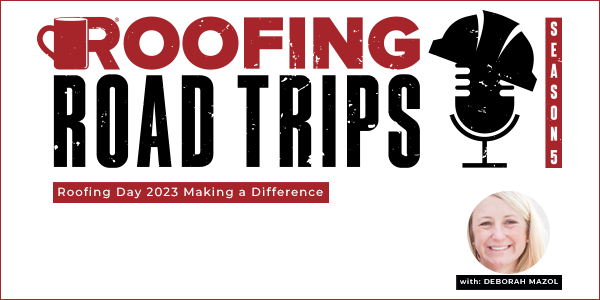
Deborah Mazol - Roofing Day 2023 Making a Difference - PODCAST TRANSCRIPTION
Read More ...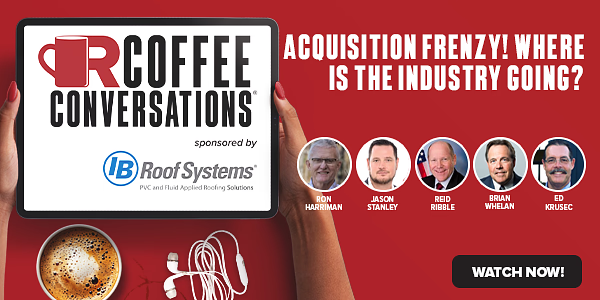
Coffee Conversations - Acquisition Frenzy! Where is the Industry Going? - PODCAST TRANSCRIPT
Read More ...




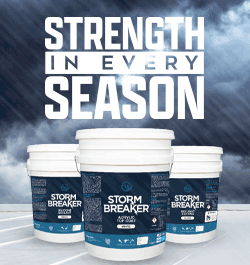







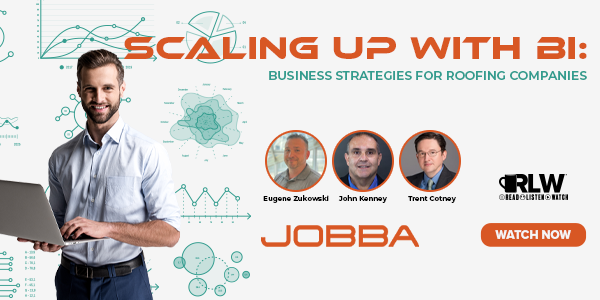





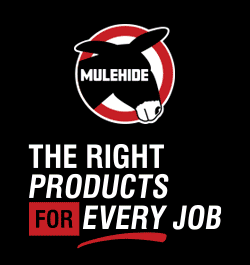
Comments
Leave a Reply
Have an account? Login to leave a comment!
Sign In